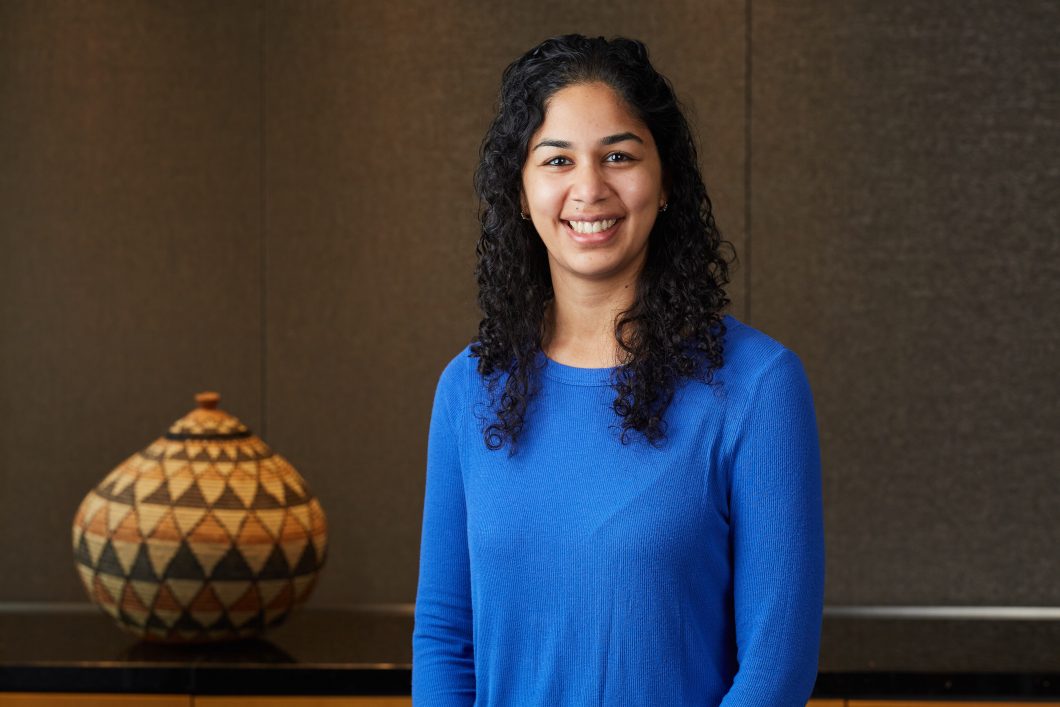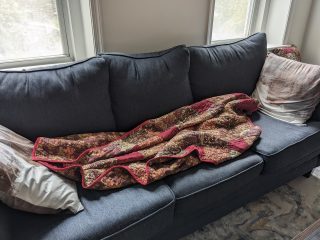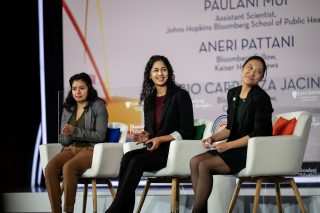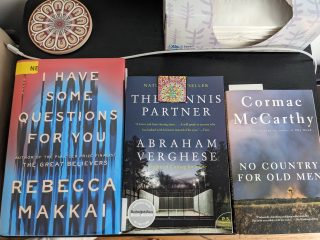
What I’m working on:
Opioid settlement money all day, every day. For over a year now, I’ve been reporting on how state and local governments are spending more than $50 billion they’re receiving from companies that made, sold, or distributed opioid painkillers. This includes the Purdue Pharma settlement that many people have heard of, but also settlements with more than a dozen other companies that were sued for their role in the overdose epidemic.
I got interested in this topic in spring 2022. I’d been covering substance-use issues for several years already, and then companies started agreeing to these massive settlements. It seemed like an amazing opportunity for governments to tackle this crisis. But the skeptical journalist in me also worried about misuse or ineffective uses of the money. Since then I’ve been obsessed with trying to track the settlement dollars and see if they will address the problems I’ve been writing about for years.
I’ve written a series of articles on this topic and am hoping to continue for the foreseeable future.
The other thing keeping me busy is my capstone project for school. Back in 2021, I helped develop a free online course to teach journalists how to responsibly report on suicide. The goal was to give reporters concrete tools and opportunities to practice story framing, interviewing, writing, and multimedia skills in covering suicide. Now, my advisor and I want to evaluate how that course is faring. We’re planning to do a qualitative research study gathering feedback from participants to learn what worked in the course and what needs to be improved. I’m very new to the research process, so there’s a steep learning curve here.

Where I work:
Earlier this year, I moved to DC, where KFF Health News’ main newsroom is located. So I now have a hybrid work schedule.
On the days that I work from home, I generally start my morning on the couch. I need the comfort as I will myself to wake up (not a morning person). Then I tend to rotate between the couch, sitting at my desk, and standing. (I always know I should stand more but the couch is so comfy.)
On the days I’m in the office, I’m lucky enough to be in a cubicle surrounded by other people I like. I enjoy chatting with them and overhearing their calls with sources, so I can pick up interviewing tips. You’ll also find me frequently at the chocolate drawer for goodies or in the kitchen capitalizing on the snacks our company provides. The packets of dried mangoes and the Babybel cheese are my favorites.
Daily routine:
7:30 a.m. First alarm.
7:45 a.m. Second alarm.
If I’m going into the office, I actually try to get up after that one. (I really hate mornings, so I do all the prep I can the night before—showering, laying out clothes for the next day, packing my purse, packing lunch into my lunch bag, which sits in the fridge. So all I have to do in the morning is brush, change, and grab all my pre-packed items.) I get dressed, leave the house at 8:00 a.m., and walk 30 minutes to work. (If it’s raining, I’ll take the bus.) That walk is generally a tech-free time for me. I don’t listen to podcasts or music. I don’t try to read on my phone. I just watch the city and the people around me. It helps me wake up and feel ready for the human interaction I’ll have with colleagues and sources throughout the day.
If I’m working from home, I wait for my third alarm to go off at 8:00 a.m. I then read a series of morning newsletters on my phone while still in bed. Once those are done and I have no more excuses, I force myself out of bed and over to the couch. (It’s a slow progression from the comfiest locale—bed—to the least comfy—standing desk.)
9:40 a.m. I usually have a check-in with my editor to discuss what I’m working on, any questions she has for me, and to swap stories about the latest group-fitness classes we’ve each tried.
The rest of my day is a mix of interviews, research, and writing. In an ideal world, I do interviews early in the day and writing in the afternoon, but it’s usually a chaotic mix.
5:30 p.m. I try to log off and go to a workout class at the YMCA. I like variety, so sometimes it’s a spin class, other times it’s barre or hip-hop step or kickboxing.
6:30 p.m. After the class, I eat dinner while watching Netflix—usually reruns of a show I’ve seen a thousand times, like Gilmore Girls, so I can easily shut it off whenever I’m done eating, even mid-episode.
7:00 p.m. In the evening, I generally pivot to school work. Sometimes that’s classes for my public health degree and sometimes it’s working on my capstone project. If I’m on deadline or struggling to pull together a draft at work, I might use this time to write.
11:00 p.m. I try to wrap up work—journalism and school both. I like to read for fun for about 30 minutes before I sleep. Sometimes (okay, a lot of times), the book is interesting and I end up reading for 45–50 minutes.
12:00 a.m. Lights out (unless the book is really, really interesting).

Most productive part of my day:
After lunch through the evening, like 9:00 p.m. This is when I can do the hardest task (for me): writing. By the afternoon, I’m fully awake and fueled by lunch. And the evening is great because emails and Slack messages start to die down, so I can really focus on the writing. It doesn’t hurt that I also start to feel a sense of panic about meeting deadlines, which tends to accelerate the writing process.
Most essential ritual or habit:
I want to say going to the YMCA group-fitness classes, but can it be an essential ritual or habit if I break it at least once a week? The workout classes are really great for my mental health. They help my mind stop planning, thinking about interviews and sources I have to follow up with, brainstorming potential ledes. Instead, I just focus on the music and what my body is doing. It feels like a treat to me, and I look forward to it every day. But, when things get really busy, this is often the part of my day that gets cut. So I guess it’s fair to say it’s my wishful most-essential habit.
Favorite note-taking techniques/tools:
I’m pretty uninspiring here. When I do phone or Zoom interviews, I type notes in a Google doc. When I meet people in person, I take notes by hand in a reporter’s notebook. Then, when I get home, I type them up in a Google doc for two reasons: 1) My shorthand to keep up with sources can get messy. I’ve found it’s best to interpret it the same day and type it up before I’m unable to decipher my handwriting. 2) I like being able to search Google docs for a particular source’s name or thought later.
I occasionally record interviews if I think it’s going to be a contentious one or if I anticipate doing a potential audio story. But even in those cases, I like to type/write notes because I find it helps me process the information better.
How I keep track of my to-do list:
The one tab that is always, always, always open on my browser is a Google doc called “To Do List.” This was first created in March 2013 and has been updated daily since. It’s not just a list of tasks but an ordered flow to my day, reminding me which tasks I aim to complete before lunch, before a certain interview, or after a particular meeting. It’s nothing fancy, but it keeps me on task. Every night, I create my list for the next day.
I also use Google Calendar religiously. I need all my events in one place, so I actually copy my work Outlook calendar onto Google. There it mingles with eight other calendars, ranging from “school” and “workout” to “volunteering” and “friends.” My fiancé says my calendar gives him anxiety, but I find the mix of colors beautiful—and helpful!
Essential software/apps/productivity tools:
The aforementioned Google doc and Google calendar are my daily lifesavers. Beyond that, I’m pretty low-tech. I use Otter to transcribe recordings, but mostly only when I’m working on a radio story.
Favorite time waster/procrastination habit:
Watching old TV shows or movies. I play a game with myself, where I decide I’ll just watch till the clock hits the next hour or half hour or 15-minute increment. Then I have to work for 15 minutes, then I get another TV/movie break. This only works with old shows or movies, where I know what’s going to happen and can make myself stop after 15 minutes.

My reading habits:
In the morning, I read for work. National news and newsletters from The New York Times and The Washington Post. Local newsletters like Hey DC and 730DC. Health newsletters like STAT Morning Rounds and Axios Vitals.
At night, I read books for fun. I recently finished I Have Some Questions for You by Rebecca Makkai, which my book club at work chose. I wouldn’t have picked it myself, but I really enjoyed the suspense and nuanced treatment of politically charged topics. Next up is The Tennis Partner by Abraham Verghese. I loved a previous book of his—My Own Country— so I have high hopes for this one.
Sleep schedule:
I’m a night owl, and if I didn’t have a job that required a somewhat normal schedule, I’d stay up till 1:30 a.m. most nights. But since that’s not the case, I generally go to bed around midnight and wake up a bit before 8:00 a.m.


